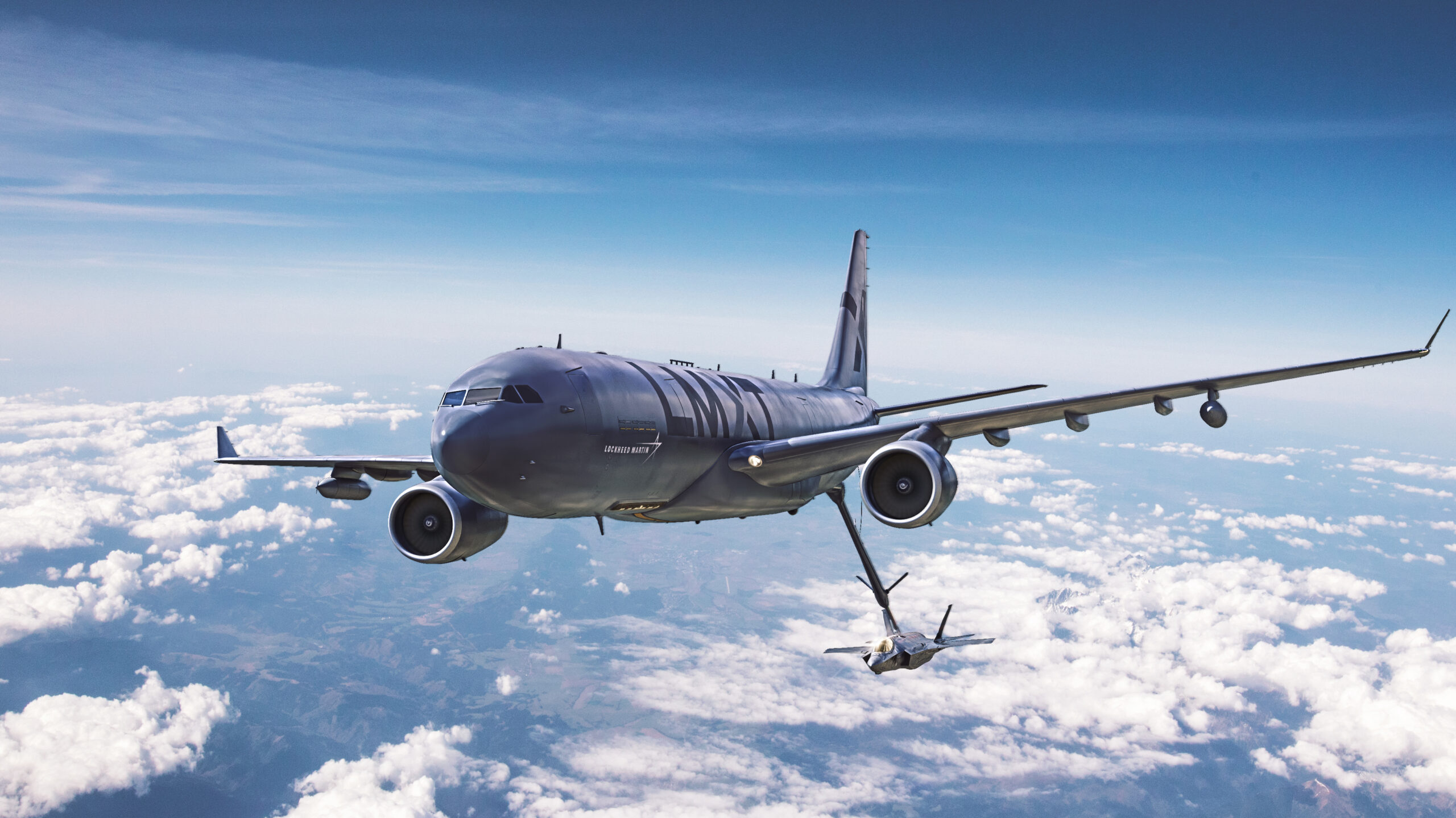
The LMXT’s boom is certified on nearly all allied and coalition aircraft in service today.
Lockheed Martin’s LMXT strategic tanker may be a new offering to the U.S. Air Force, but it delivers a unique mix of proven technologies and known insights to ensure Airmen and women are prepared to support current and future mission requirements.
Introduced by tanker expert Lockheed Martin in 2021, the LMXT builds on the established performance of the Airbus Multi Role Tanker Transport (MRTT). The MRTT is the choice of 14 nations and is currently refueling U.S. and allied aircraft in active operational theater environments around the world.
“The LMXT aerial refueling system benefits from nearly 15 years of development, operation and continuous upgrades,” said KC Martin, strategy lead for Lockheed Martin’s LMXT Program. “The result is a low-risk and highly capable refueling system that is not a concept, but a reality — refueling aircraft today.”
ICYMI: Lockheed Martin and Airbus recently announced the LMXT’s boom will be manufactured by Airbus in western Arkansas, underscoring the LMXT’s commitment to being built in America for Americans by Americans. Read more here.
Clear Benefits
The LMXT is equipped with established, state-of-the-art air refueling systems that are fully interoperable with slipway-equipped receivers. The key components of the air refueling system include the Aerial Refueling Boom System (ARBS), Air Refueling Operator (ARO) Console and the Boom Enhanced Vision System (BEVS), Martin adds.
- ARBS: The ARBS provides the capability to refuel slipway-equipped receivers at a rate of 1,200 gal/min. The system has a fly-by-wire control system and an operating range three times that of the KC-135 providing a greatly expanded refueling envelope — a significant advantage when you consider refueling missions in critical operational environments such as the vast Indo-Pacific region.
- ARO Console: The air refueling operator directs the operations of the system from a flight deck console. The co-location of the operator station on the flight deck allows enhanced crew coordination and situational awareness.
- BEVS: The operator can observe the refueling of slipway-equipped receivers through the BEVS. The BEVS is an array of visual and IR cameras providing 2D/3D day and night imagery to the operator.

The LMXT aerial refueling system benefits from nearly 15 years of development, operation and continuous upgrades.
“Starting with developmental flights in 2007, the ARBS has been developed, certified and improved —resulting in the world’s most mature and capable digital boom system,” Martin said, noting the ARBS’ digital control architecture fosters the incorporation of enhancements for increased safety, reduced operation load and adaptation to receivers.
A continuous improvement program focuses on increasing boom reliability while reducing maintenance. The ARBS digital controls and high-definition BEVS allow for the integration of an automatic air-to-air refueling (A3R) capability that further enhances safety and reduces operation workload.
Proven Performance
In addition to its advanced technology, the LMXT boom — which is the same boom in operation on the MRTT — is certified on nearly all allied and coalition aircraft in service today. It holds refueling certifications with the following aircraft: A-10, B-1, C-17, E-3, E-7, F-15, F-16, F-22, F-35, the P-8 and, of course, the A330 MRTT.
“The MRTT has been conducting refueling operations with coalition aircraft in combat since 2012, meaning this proven air refueling system is approaching its tenth year of operational excellence,” said Ken Moss, a retired U.S. Air Force tanker pilot and Lockheed Martin’s LMXT campaign manager.
The only U.S. aircraft that are not currently certified to refuel on the MRTT boom are those it is difficult to get test data for, like the B-52 and B-2. There is no design reason the boom system cannot be certified for all U.S. Air Force aircraft with a standard refueling receptacle (UARSSI), Moss adds.

The LMXT is equipped with established, state-of-the-art air refueling systems and is undergoing review for certification of Automatic Air-to-Air Refueling.
Automated Advantages
“Future refueling operations with the LMXT boom offer a number of possibilities and that future is not far off,” Moss said.
The MRTT boom is undergoing review for certification of A3R refueling, which is a procedure that takes advantage of the high-resolution image from the aircraft’s Rear Vision System and pairs it with the low-latency signal to the boom’s fly-by-wire controller to initiate air refueling contacts without human interaction. This capability allows for safe refueling during longer missions and can reduce fatigue and stress from both the tanker and receiver crews.
Automatic air-to-air refueling opens up opportunities for the U.S. Air Force to refine how it operates — including the training programs it offers boom operators and receivers, the reduction of crew workloads, and the integration of mission efficiency — both on the longest missions and for basic sorties to support increased mission success.
Automatic air-to-air refueling expedites the development of in-flight refueling for uncrewed air vehicles, catalyzing the development of new tactics, techniques and procedures for conducting air operations.
“Most importantly, these advancements are currently available — or will be by the time the LMXT is in operation,” Moss said. “In many respects, the future is now with the LMXT.”
The LMXT complements the U.S. Air Force’s tanker capabilities by providing the most advanced aerial refueler to meet America’s immediate and long-term mission requirements. As the prime contractor, Lockheed Martin works directly to implement U.S. Air Force-specific requirements within the LMXT.
For additional information, visit: www.lockheedmartin.com/lmxt.





















